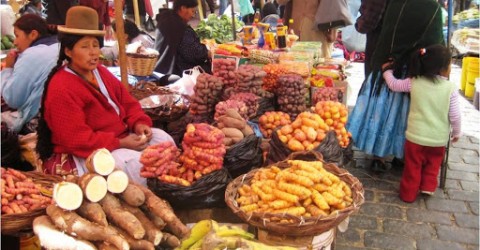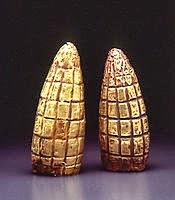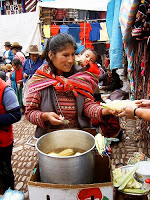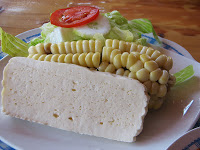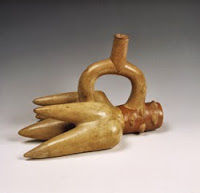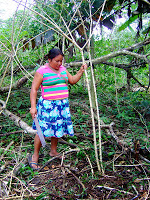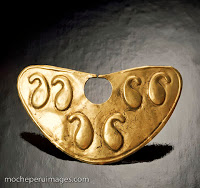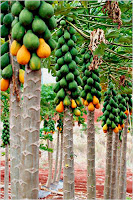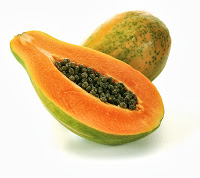Choclo (Zea mays)
Choclo is best consumed on the side of the road in the high Andes during a break in a 36 hour bus ride. It should be boiled, cheesed, and re-husked. You should eat the choclo with no utensils, ideally while watching a herd of wild vicuña scamper across the inter-Andean plain. Vegetarians, this is your go-to snack while traveling: you are not likely to find other street food that is not meaty.
Yuca/Cassava/Manioc (Manihot esculenta)
Papaya (Carica papaya)
I hope that you readers appreciate my sacrifice. For over a decade the papaya and I have had issues, but I would feel like a cheater if I reviewed it from memory alone. So today, for you dear reader, I bought the smallest piece of papaya possible and forced myself to eat some of it.
Papayas have some things going for them. They are ubiquitous in Latin America and very affordable. I long to spend 20p on one massive papaya and eat it for days. They look amazing on the tree, growing in a big clump up and around the trunk. The flesh of the papaya is the nameless orange/red/pink/yellow colour of sunset. Their leaves, seeds, and perhaps even flesh have abortive and contraceptive qualities (papaya only education?). Also, Wikipedia says that papaya can be used as hair conditioner which makes me feel better about not eating any more of this unpleasant thing. I will just squish it on my head later tonight.
The papaya starts out good: you can scoop the flesh with a spoon and the initial taste, if weak, is at least fresh. Unfortunately the good doesn’t last long: within a moment I am hit with a difficult to describe aftertaste. I want to say that it is fleshy or meaty, but it really isn’t. Those are the adjectives that I came up with when I first tried papaya years ago. I can’t shake them. I think that my main problem with papaya, besides the aftertaste, is that it is neither tart or sour like the best fruits (my kingdom for a mango, pineapple, tamarind, or sour sop), nor does it it have some unique flavour that alone justifies a presence in my fruit bowl (think avocado, coconut, or, if you have been blessed, cashew fruit as wine). Papayas aren’t outright gross like chirimoya and I eat them when I must, but I won’t be buying another one unless this one makes my hair look luscious.
*Note: the fruit depicted on the Moche nose ornament is the mysterious ulluchu. Some identify it as the wild papaya.

 Feed
Feed Follow
Follow